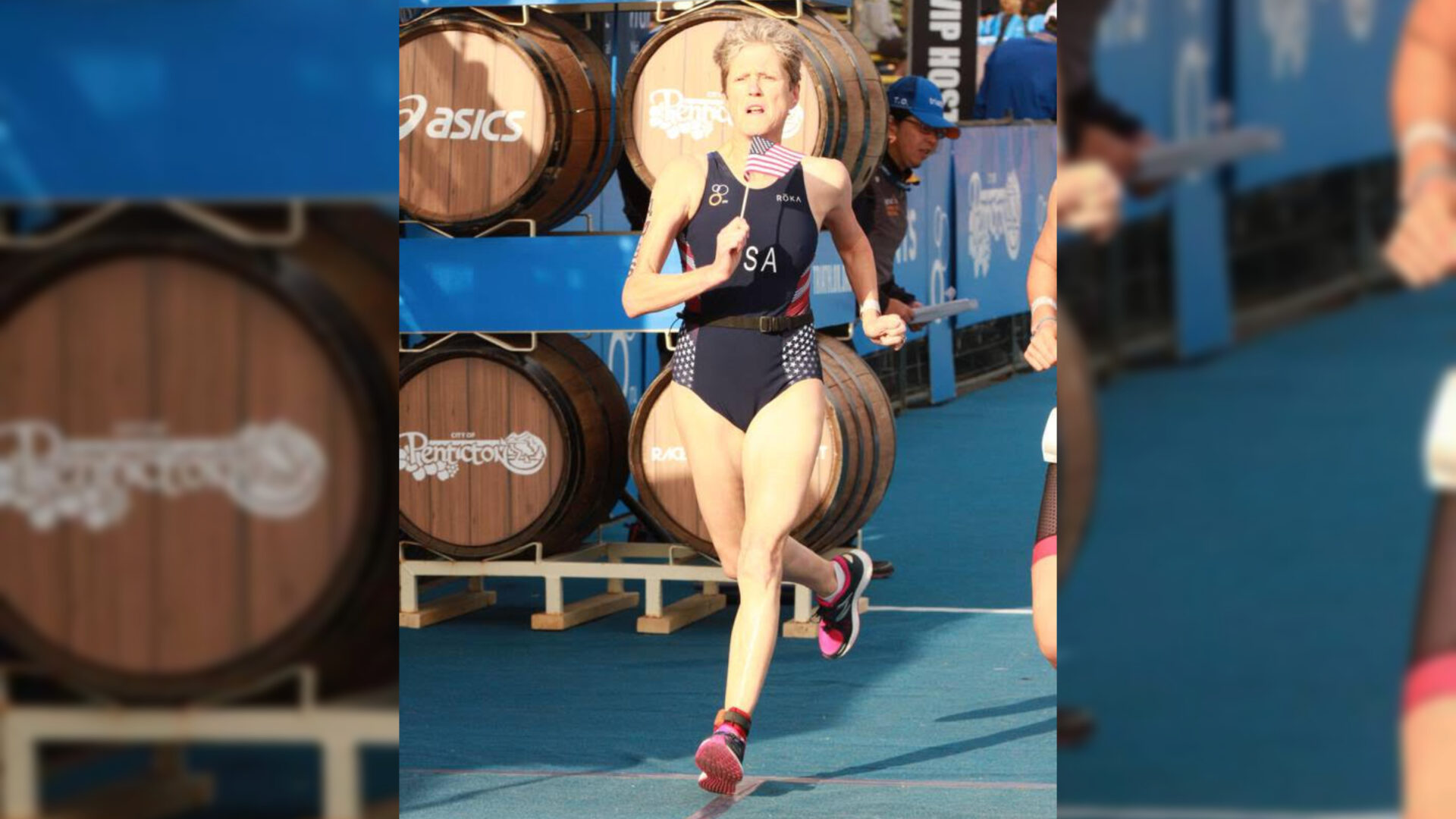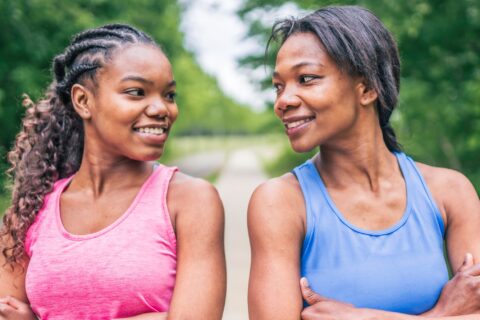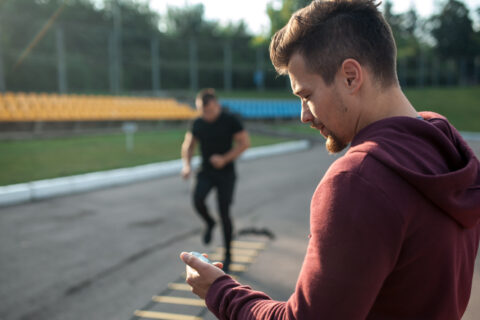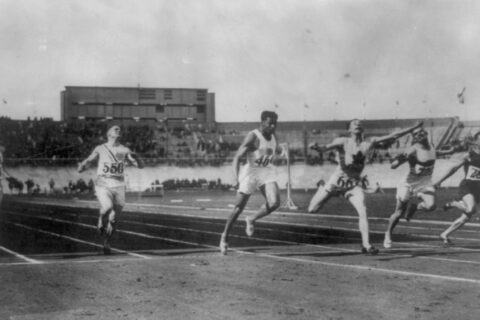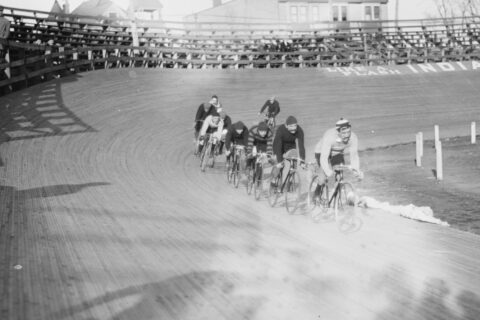Like many women who predated Title IX, I am someone who had the talent but not the opportunity to be my best at running in college. This regret, and my love for the sport, ultimately inspired my own midlife training and competition, as well as my course of studying, teaching, and coaching athlete performance across the lifespan.
Chasing down missed opportunities
I’ve always loved running. In the neighborhood races, I was fast. I sought out Frankie, a year older, to be my running partner. At age 10 I organized neighborhood-wide Olympic events where a crack in the sidewalk marked the finish line for a sprint of unknown distance for every runner, including several with disabilities. I wanted everyone to be in on it, I also loved cheering for my fellow athletes.
Fast forward to high school and college. Running wasn’t offered as a sport for girls at the schools I attended. So in high school I took on all of the sports I could—tennis, field hockey, and even basketball. I also did cross-country skiing, which entailed running with a local cross-country team in the fall to prepare for the season. At Middlebury College I competed in tennis, squash, and cross-country skiing.
So maybe it wasn’t surprising when, in my thirties, I enrolled in an Ed.D. doctoral program at Boston University in coaching and performance. The program began with a half-marathon race on the Boston Marathon course. I won, the first finisher among men and women, clocking in at about 1:17. After that race I was preoccupied with missed opportunities in my college years and beyond.
My curiosity about masters running sparked, I chose it as my dissertation topic. It focused on 103 masters women runners, sprinters, and distance runners. I compared 50 women who started running after age 30 with those who started running in their teens and early twenties. Like me, these latecomers possessed athletic talent. My research revealed that after five to seven years of training, those runners who started after 30 could be as fast as those who started running in their teens and early twenties. This finding offered hope, which I eventually took hold of in pursuing my best performance as a runner, as did many others.
Competing as a latecomer
At the time I began my doctoral studies, I was a mom with two young children and a husband who frequently travelled. I started coaching, putting into practice my own goal achievement method based on the theories of excellence I studied for my dissertation. My MOVE! method focuses athletes on how to Motivate, Organize, Visualize, and Excel in sport (or anything else).
I also began running competitively. Around age 40 I started entering local races. Given my success in those early races, New Balance offered me new shoes and clothing. I didn’t race often—certainly not even every month. I remained focused on my professional goals and my family.
Nevertheless, I was consistent, and over the next 25 years I moved from Boston’s local racing scene to compete at the state, regional, national, and world championships. Along the way I defined the meaning of important races, just as I asked my coaching clients to do. In some competitions, I beat former Olympic Trials and Division I runners, confirming my belief that I might have been competitive in college.
RELATED: Forget (Most) of What You’ve Heard About the Effects of Aging
After my father died, I ran a national championship in his honor, ultimately winning my age division. It was a momentous achievement in my running career, encapsulating a deeply personal meaning. It was about so much more than realizing an opportunity in midlife that I didn’t have in college. The experience marked a “connection and correction” that extended beyond me to include my family. My father was a talented runner who never had his chance to compete. A national-team hopeful in Nazi-occupied Germany in the 1930s, my father was Jewish. He was forced to run for his life, immigrating to America. My experience of midlife running felt like vindication.
Pain and performance over the years
During my 25 years as a masters runner, the challenges were many and varied. They included injuries. Right after I started running I made the difficult choice to give up tennis. I had played consistently since college, but the combination of lateral movements on the court with tight turns on the indoor track led to three stress fractures. At one point I was sidelined for five years with nagging Achilles tendonitis. During that time, I did my running in the pool, which I continue to enjoy now.
By age 58, running had become painful, causing me to think, “This is not worth it!” Three doctors said I couldn’t run again as result of arthritis and meniscal tears. So I started competing in open-water swims. Just 18 months later, at age 61, I was running again.
When I turned 65, there were now five doctors telling me “You are done.” By this point, worsening arthritis and more significant tears made efforts to jog even 100 yards difficult, despite numerous attempts over many months. Instead, I relied on biking and swimming as staples of my training.
There were other life challenges to face: balancing training with parenting, which is never a straight line, and the death of my parents… the “usual stuff” that happens in midlife. But through it all, my perspective on performance became richer from teaching, writing, and speaking about it. From 2005 to 2006, I began teaching coaching for performance and sports leadership at Boston College.
Lining up goals beyond running
I haven’t run a step for the past two years. Knee and arthritis issues have persisted and are now worse. I’ve been told that knee replacement should be part of my three-year plan. I’m still committed to daily training on my Peloton, swimming three times a week, and strength training twice a week. I do miss running, but I’m OK with not competing as a runner anymore. In fact, my knee issues forced me to think of new goals in other physical areas and I’m grateful for new opportunities.
If I hadn’t stopped competing, I wouldn’t have started playing club paddle tennis, a doubles game that rewards teamwork, the patience of a tortoise, the speed of a hare, fitness, and accuracy. For me, paddle tennis is meaningful because it entails social interaction and skill development. I enjoy the fact that we play outdoors, mostly in cold weather. The court is about one-third the size of a tennis court and surrounded by 12-foot high “chicken wire” screens, offering enough differences to give me a new challenge. As the paddle season winds down, I will inevitably find myself entertaining new goals once again.
Not setting a goal is not an option for me. I want to be ready to let go of previous expectations and embrace a new sport or a new approach to coaching when the time is right. I hope I’ll be able to find a new sport, if I have to, at age 85.
I have watched athletes and coaches let go of their peak in sports to take on something new, and I see it as a display of confidence, curiosity, and wisdom. Like me, these bold athletes and coaches know that nothing in life stays the same. One thing I know: I don’t want to have any regrets. I’m grateful.

